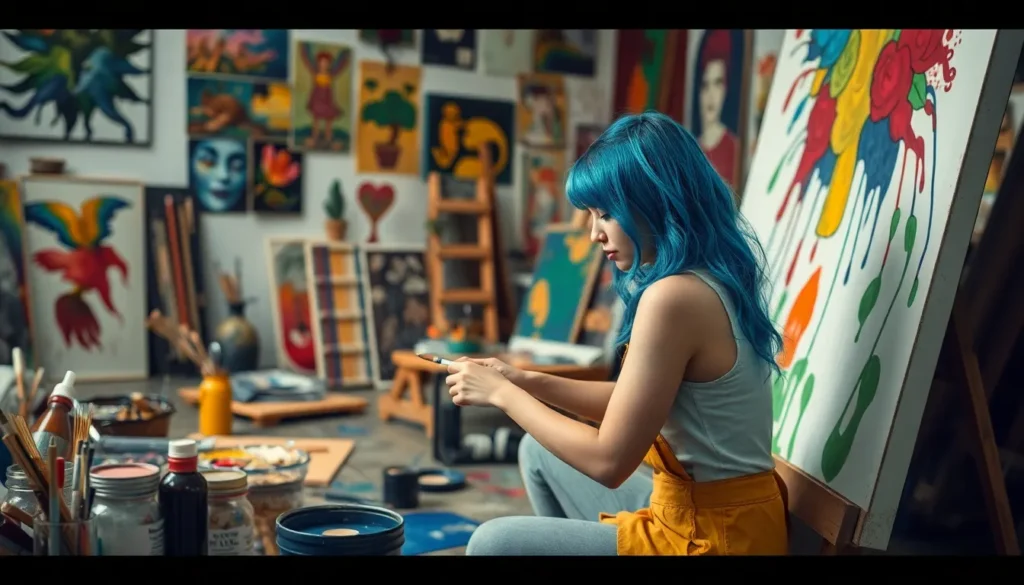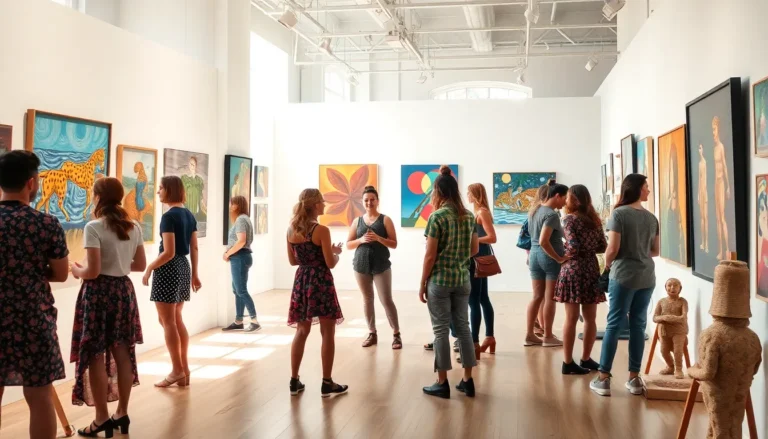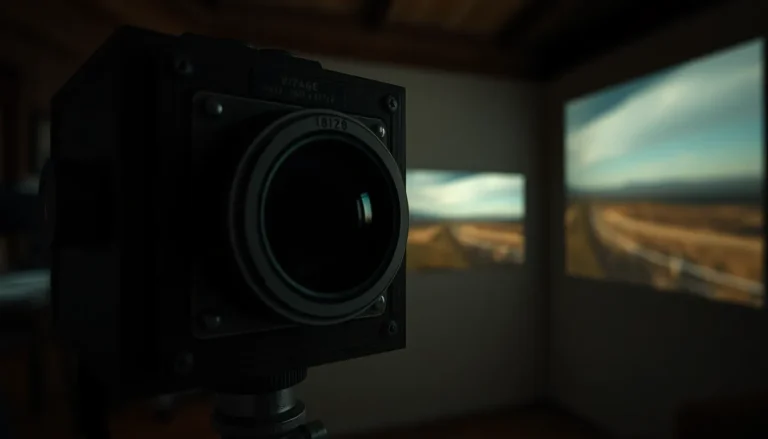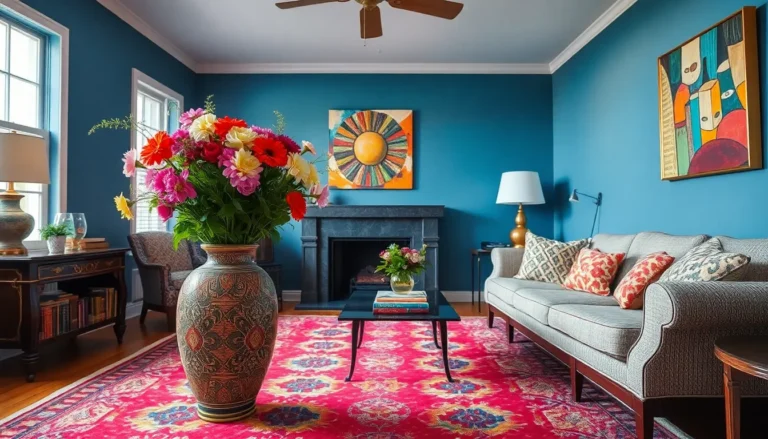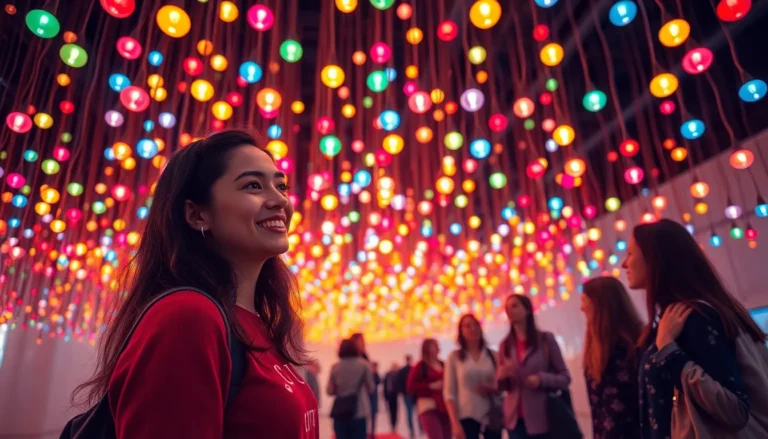Table of Contents
ToggleIn a world flooded with mass-produced decor, unique art pieces stand out like a unicorn at a dog show. They’re not just decorations; they’re conversation starters, mood lifters, and sometimes, the perfect excuse to avoid awkward small talk at parties. Imagine having a piece that not only reflects your personality but also makes guests do a double-take.
From quirky sculptures to vibrant paintings, unique art pieces can transform any space into a gallery of individuality. They tell stories, evoke emotions, and often leave people wondering, “What on earth inspired that?” So, whether you’re a seasoned collector or just dipping your toes into the art world, embracing these one-of-a-kind creations can add a splash of creativity to your life. Let’s dive into the wonderful world of unique art and discover why it deserves a special spot in your home.
Overview of Unique Art Pieces
Unique art pieces play a vital role in personal expression and creativity. These artworks often reflect an artist’s individuality and vision, making them invaluable to collectors and art enthusiasts. They possess inherent qualities that distinguish them from mass-produced items, creating a connection between the viewer and the piece.
Various types of unique art pieces exist, including paintings, sculptures, and mixed media works. Each type offers a different glimpse into the artist’s mind. For example, abstract paintings can evoke intense emotions while realistic sculptures showcase precise detail and craftsmanship.
Art pieces crafted by emerging artists contribute to a rich and diverse art scene. The fusion of innovative techniques and personal narratives in their work makes them particularly appealing. Collectors frequently seek out these pieces to support artists and celebrate originality.
Incorporating unique art pieces into home decor transforms mundane spaces into personal galleries. These artworks spark conversations and invite visitors to engage with the stories behind each piece. They set the tone for the ambiance, adding depth and character to any environment.
Embracing unique art pieces fosters appreciation for creativity and individual expression. Collectors and decorators alike find inspiration in these one-of-a-kind creations. Art aficionados often invest in unique pieces, knowing they not only beautify a space but also represent personal journeys and artistic exploration.
Characteristics of Unique Art Pieces
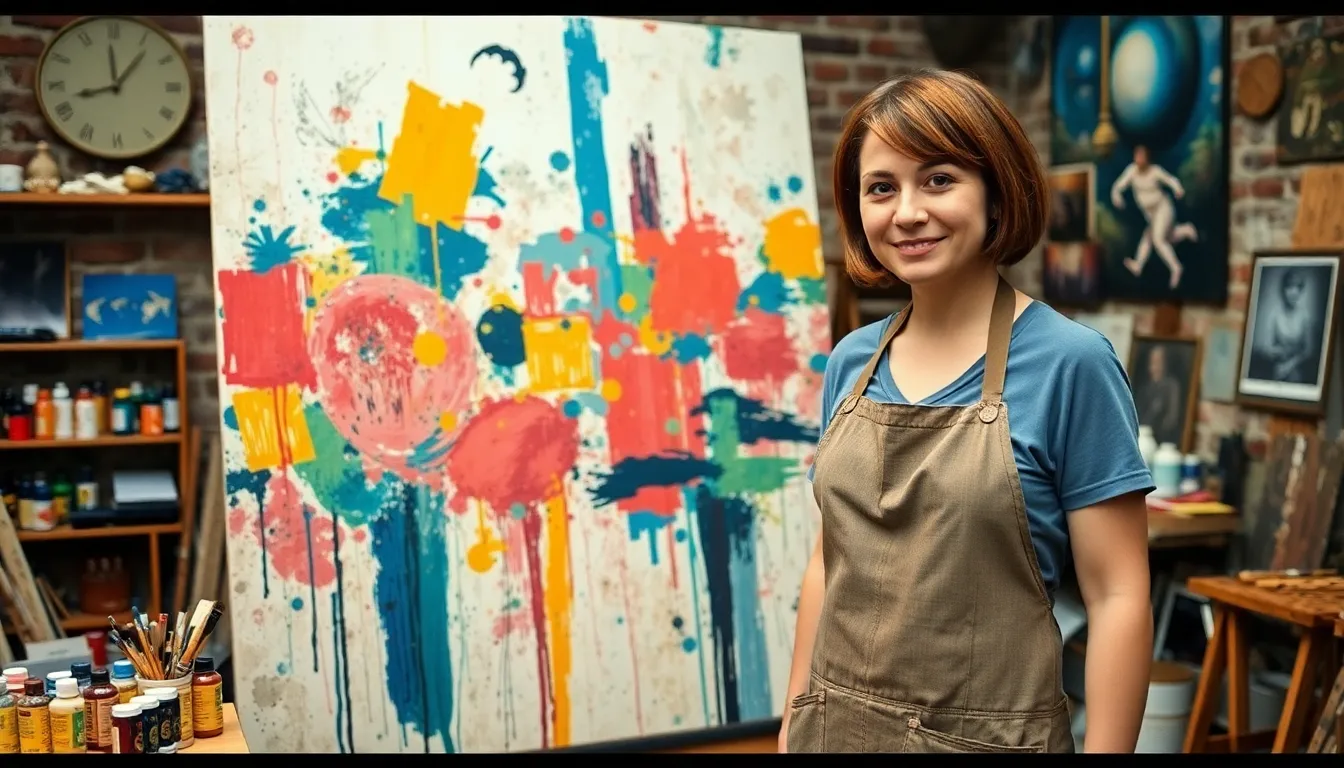
Unique art pieces possess defining characteristics that set them apart. Originality and creativity shine in every artwork, capturing the essence of the artist’s vision.
Originality and Creativity
Originality defines unique art pieces, showcasing an artist’s distinct perspective. Creativity manifests through innovative ideas and techniques, pushing boundaries. Artists often draw inspiration from personal experiences or cultural backgrounds. Each piece tells a unique story, evoking emotions and sparking dialogues. They often challenge conventional norms, encouraging viewers to think differently. Collectors appreciate originality since it adds value and rarity. Different styles emerge, including abstract, surreal, and contemporary forms. Unique pieces often reflect evolving trends and personal artistry, emphasizing individual expression.
Use of Materials
Materials significantly impact the character of unique art pieces, influencing both aesthetics and texture. Artists frequently experiment with diverse mediums such as oil paints, acrylics, and natural elements. Each material brings its unique qualities to the piece, enhancing the visual experience. Sculptures might use metal, wood, or glass, reflecting the artist’s intent and creativity. Utilizing recycled or unconventional materials promotes sustainability, adding depth to the artwork. Textures vary, inviting tactile interaction from viewers. The choice of materials not only defines the artwork’s look but also communicates a deeper message about the artist’s philosophy.
Famous Examples of Unique Art Pieces
Unique art pieces capture the essence of creativity and personal expression. Notable examples showcase the diverse styles and perspectives of artists across different eras.
Iconic Artists and Their Works
Pablo Picasso revolutionized art with his Cubist paintings, such as “Les Demoiselles d’Avignon,” which challenged perceptions of form and space. Vincent van Gogh’s “Starry Night” remains iconic for its expressive brushwork and emotional depth. Frida Kahlo’s self-portraits, such as “The Two Fridas,” explore identity and personal experiences. Each artist’s unique approach showcases how distinctive perspectives shape the art world.
Contemporary Unique Art Pieces
Banksy’s street art, like “Girl with a Balloon,” merges social commentary with striking visuals, engaging viewers in provocative dialogue. Yayoi Kusama’s infinity rooms invite immersion, blending installation art with interactive experiences. Takashi Murakami’s playful, pop-infused works, such as “Flower Ball,” juxtapose traditional themes with modern aesthetics. Each contemporary piece reflects ongoing trends while pushing boundaries, showcasing the evolution of unique artistry.
The Impact of Unique Art Pieces on Culture
Unique art pieces significantly shape culture, influencing social interactions and showcasing individual creativity. Art engages communities, creating shared experiences that foster dialogue.
Influence on Society
Unique artworks provoke conversations about identity, values, and societal issues. They often serve as reflections of cultural movements and collective sentiments, challenging conventional ideas. Emerging artists contribute fresh perspectives, sparking conversations that resonate deeply within communities. Their unconventional approaches can encourage critical thinking and inspire activism. Unique art’s ability to communicate complex emotions aids in understanding diverse narratives, enriching relationships among viewers. By exploring themes such as love, loss, and resilience, these pieces leave lasting impacts on society’s cultural fabric.
Unique Art in Modern Exhibitions
Modern exhibitions feature unique art pieces that attract diverse audiences, showcasing the importance of individuality. Galleries and museums curate collections that highlight contemporary narratives, emphasizing inclusivity and representation. Exhibitions often present mixed media and immersive experiences, inviting visitors to engage directly with the art. Artists frequently collaborate with institutions, pushing creative boundaries and integrating technology. The interactive nature of these exhibitions helps bridge gaps between artists and audiences, encouraging exploration of different perspectives. Unique art in this context cultivates appreciation for innovation and elevates the role of art in public discourse.
Unique art pieces hold immense value in today’s world. They serve as more than just decor; they embody stories and emotions that resonate with viewers. Each piece reflects the artist’s individuality and creativity, inviting engagement and fostering appreciation for diverse perspectives.
Incorporating unique art into spaces not only enhances aesthetics but also sparks conversations. The evolving art scene, enriched by emerging artists, continues to challenge norms and inspire critical thinking. As unique art becomes increasingly accessible, its impact on culture and society grows, making it an essential part of personal expression and community identity.

